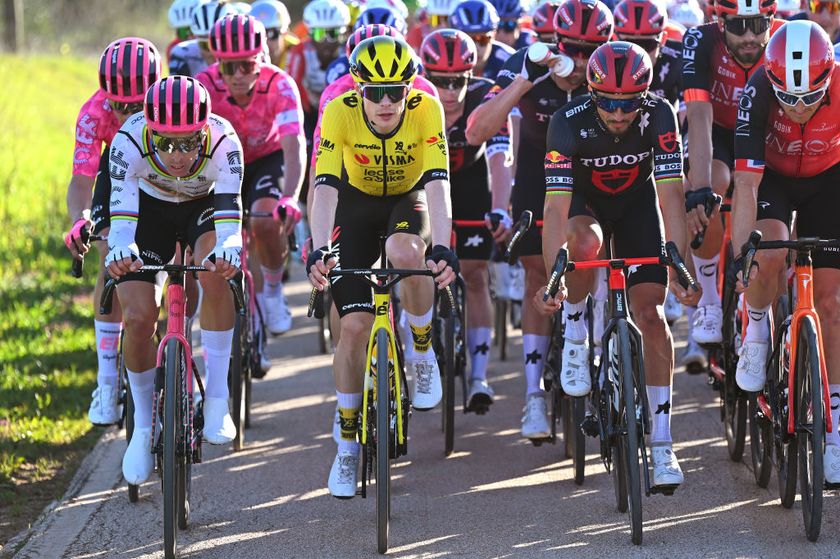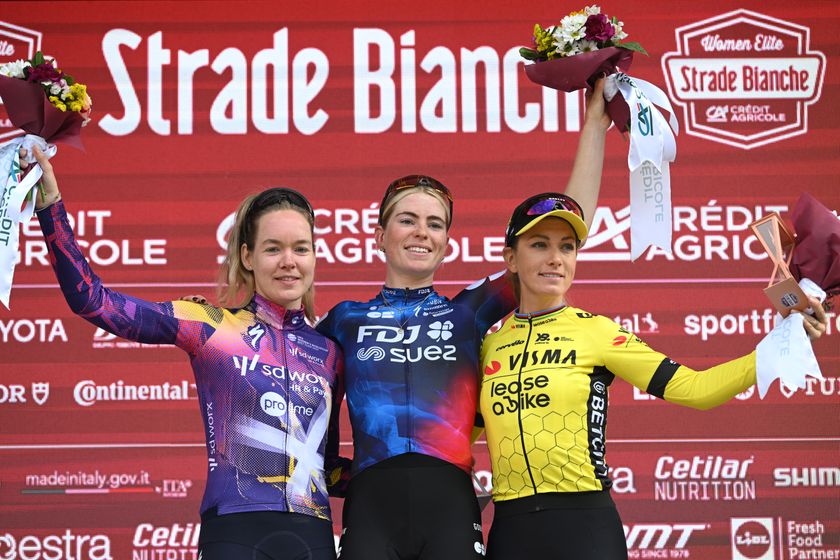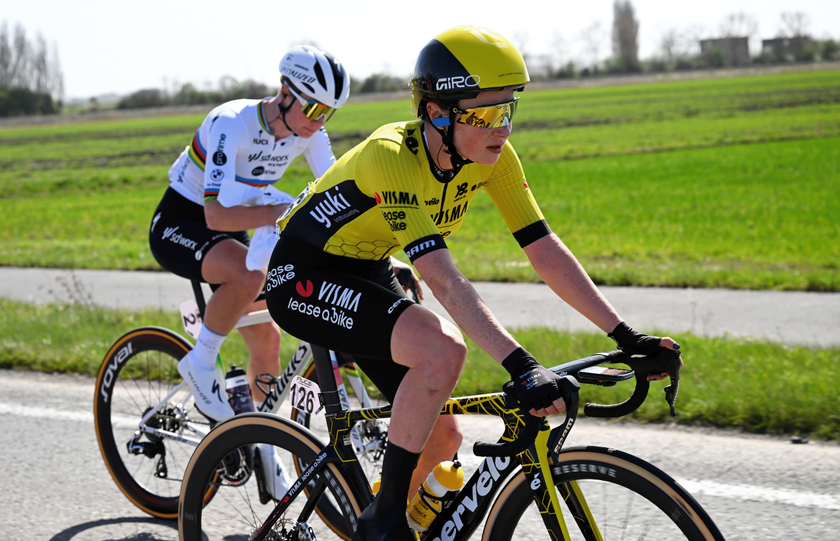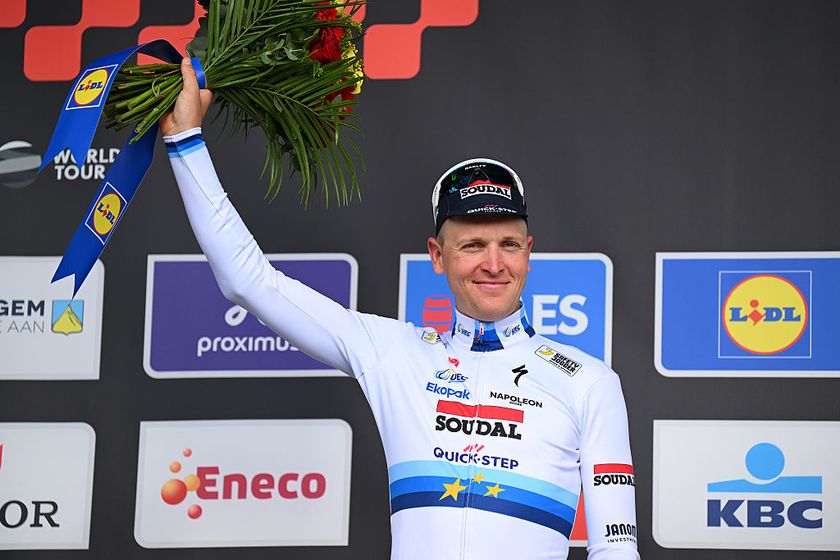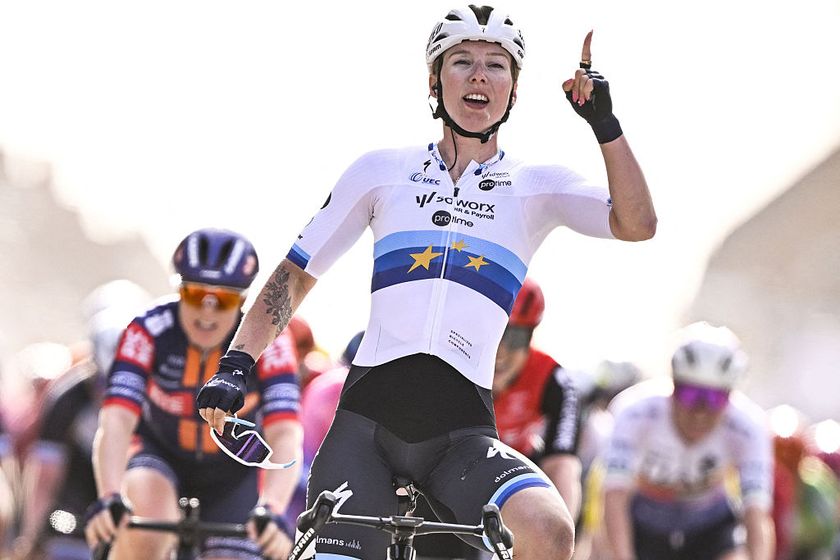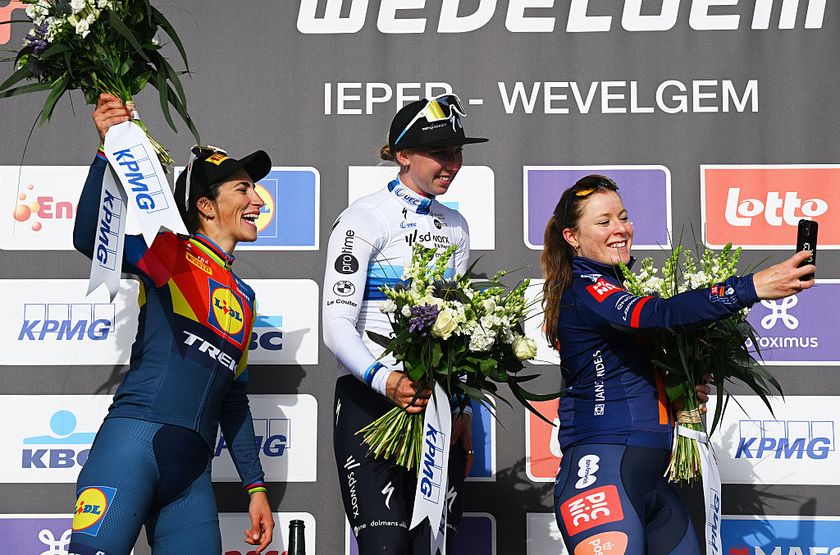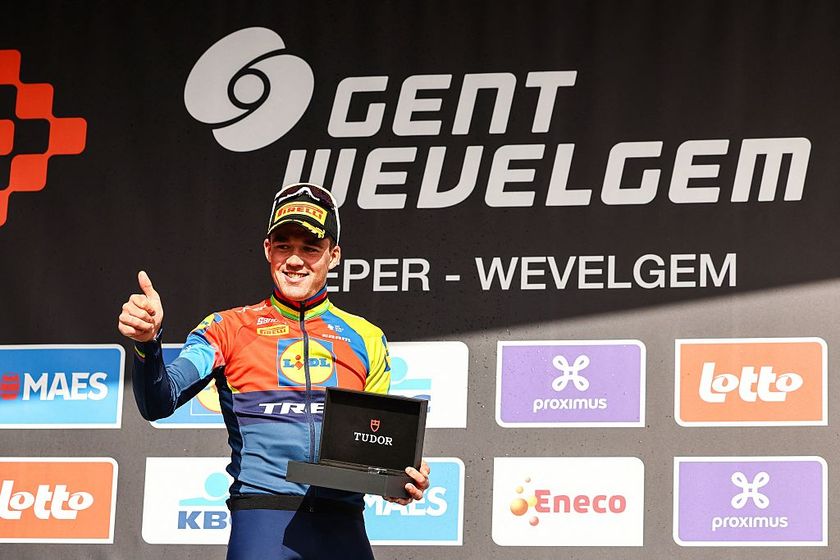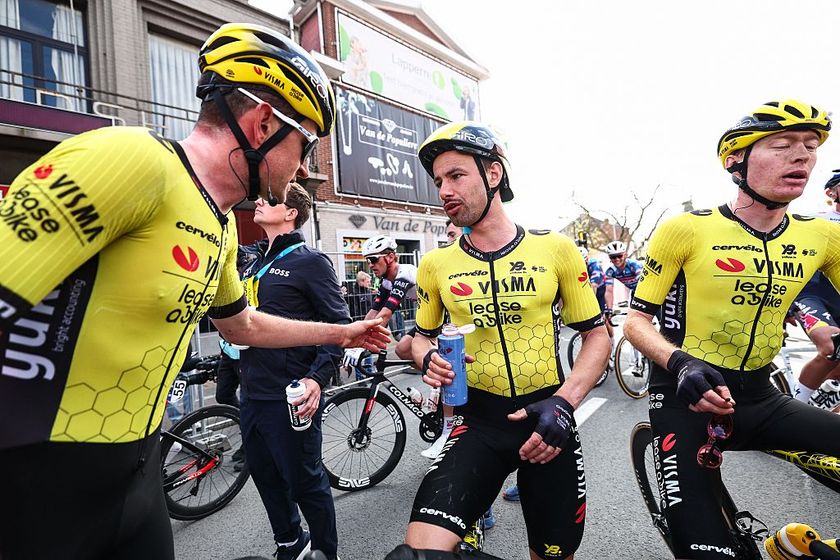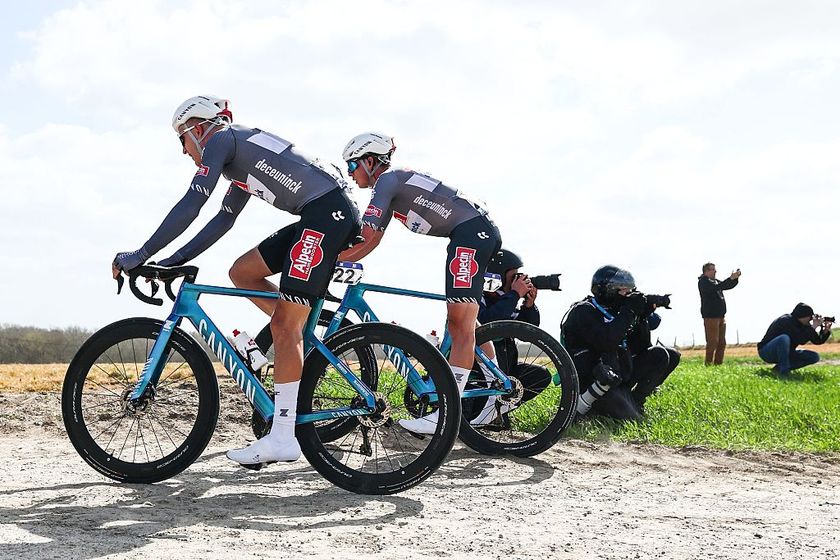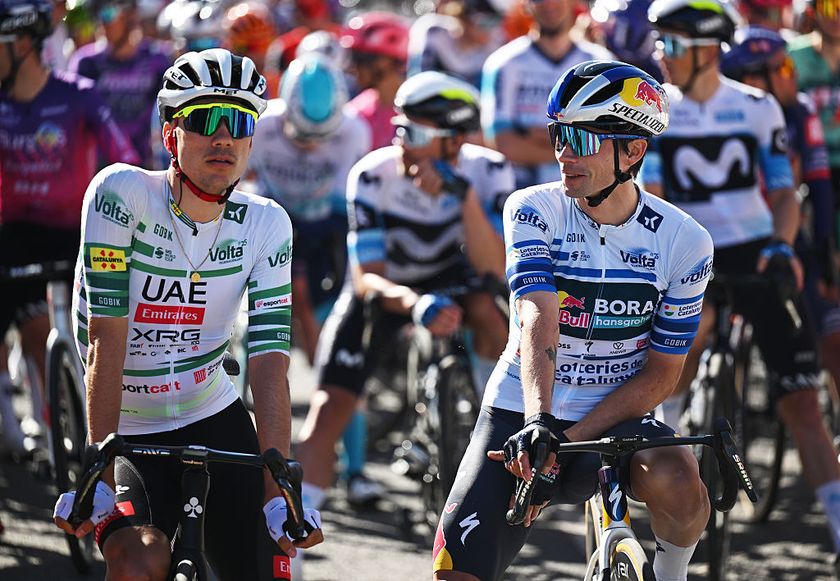Cyclingnews' Guide to the 2013 Spring Classics
Your guide to the 2013 Spring Classics






Milan-San Remo - March 17
Milan-San Remo is one of most delicately balanced races on the calendar, and there is arguably no other Classic that has such a long list of potential victors. Ostensibly, the largely flat route and fast finale heavily favours the sprinters, but with after seven hours of racing, the famous capi on the approach to San Remo swell from mere ripples to severe obstacles that can be the graveyard of so many sprinters’ ambitions and the Classics stars will have their say too during the 298km race.
Fabian Cancellara says: “It’s a special race with a story behind it. It’s like a bottle of champagne, you shake it , you shake it more and then you open it. It’s all about the final two climbs and saving energy. When I won everyone knew not to give me 10 meters but they gave me just one and that was too much."
2012 Milan-San Remo race report | 2012 Milan-San Remo photos | 2011 Milan-San Remo | 2010 Milan-San Remo | Previous winners
Gent-Wevelgem - March 24
Known for its climb and dicey descent of the Kemmelberg, which was previously the only difficulty in the race, the course features 16 bergs including the Kemmel and a slightly longer parcours.
The early part of the race takes place near Belgium's North Sea coast line, which means high winds often shatters the peloton into bits.
Get The Leadout Newsletter
The latest race content, interviews, features, reviews and expert buying guides, direct to your inbox!
As with the Tour of Flanders, Belgian riders have dominated the history of the race. Last year Tom Boonen was on song again at Gent-Wevelgem, showing prime form and fortune ahead of the Tour of Flanders by out-sprinting Peter Sagan (Liquigas-Cannondale) and Matti Breschel (Rabobank).
2012 Gent-Wevlegem race report | 2012 Gent-Wevlegem photos | 2011 Gent-Wevlegem | 2010 Gent-Wevlegem | Previous winners
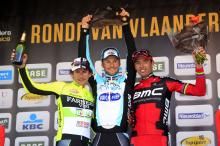
The Tour of Flanders is the first of the true Northern classics and the second of cycling's five Monuments. After significant changes to last year's route caused controversy, with riders and fans reacting with consternation to the removal of the Muur van Geraardsbergen from the parcours, there is at least a blue print for this year's edition.
The race has retained its status as one of the most loved and eagerly anticipated of the season and remains Belgium’s premier Monument. The Tour of Flanders traditionally attracts the best riders in the world to the start line, but riders of other nationalities are always fighting the home team here. The race is a national emblem in Belgium and the host country’s riders have won almost seven times more titles here than any other nation. Last year Tom Boonen edged out Filippo Pozzato and Alessandro Ballan in three-man sprint finish.
Fabian Cancellara says: "The whole day is special. You go to Belgium, to Flanders, and it’s another world with so much passion for racing. The strongest rider should come out on top but you have to work at everything. You need your team, you need luck but it’s one of the hardest one day races in the season."
2012 Tour of Flanders race report | 2012 Tour of Flanders photos | 2011 Tour of Flanders | 2010 Tour of Flanders | Previous winners
Paris-Roubaix - April 7
There is no other race in the world like the Paris-Roubaix. The French race is known as the 'Hell of the North' thanks to its torturous pavé sectors and the many stories of pain and destruction that they hold.
Dreams of riders like George Hincapie and Johan Museeuw have ended in tears along the roadside, but the risks make victory in the velodrome that much sweeter. After 260 kilometres, around 50 on pavé, the race ends with one and a half laps on Roubaix's outdoor track.
Win in Roubaix, the third of the Monuments, and you are considered a god. Riders like Fausto Coppi, Rik Van Looy, Eddy Merckx, Francesco Moser, Sean Kelly and Tom Boonen have tamed Paris-Roubaix's pavé for the well-earned status.
In 2012 Tom Boonen (Omega Pharma-QuickStep) rode into the record books with a dominant solo victory. The 31-year-old Belgian rode the final 52km alone to win by 1:39 over a five-man chase group. With the victory Boonen equals Roger De Vlaeminck's all-time win record of four victories in the Hell of the North, and for the second time in Boonen's career he claimed the Tour of Flanders/Paris-Roubaix double in the same season.
Fabian Cancellara says: "I have many beautiful memories of this race. I know how to adapt to this race, and I like the challenges it poses from a technical point of view but you need the luck. Sometimes it’s like an individual time trial though and along with luck you need to be smart."
2012 Paris-Roubaix race report | 2012 Paris-Roubaix photos | 2011 Paris-Roubaix | 2010 Paris-Roubaix | Previous winners
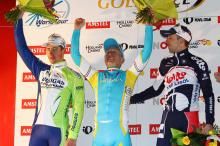
The Dutch Classic Amstel Gold Race has a character all of its own: twisty and narrow roads, short and steep climbs, and crazed orange-clad fans. The first of three Ardennes Classics is a race to watch and one for the riders to add to their palmarès.
The relatively new classic (this year celebrating its 47th edition) starts in Maastricht and ends with three circuits on the Cauberg. The first two times up the 1.5-kilometre climb splits the race into select groups, while the final ascent decides the race winner. However the finish line has been moved to match the Worlds 2012 course with the line coming 1.7km beyond the Cauberg.
Home teams Blanco, Argos-Shimano and Vacansoleil will go all out to make their presence felt in this race, but in recent years they have fallen short of the victory. Italians have made this race theirs since Erik Dekker last won for Rabobank and the Netherlands in 2001.
In 2012 Enrico Gasparotto (Astana Pro Team) won a thrilling Amstel Gold Race, timing his sprint to perfection atop the Cauberg, to win ahead of Jelle Vanendert (Lotto Belisol Team) and Peter Sagan (Liquigas-Cannondale).
2012 Amstel Gold Race race report | 2012 Amstel Gold Race photos | 2011 Amstel Gold Race | 2010 Amstel Gold Race | Previous winners
La Flèche Wallonne - April 17
Belgium's Flèche Wallonne is a mid-week race with a short distance of 200 kilometres, but that does not change the importance of this race that always ends with spectacular explosions on the famed Mur de Huy. The climb is a 1300-metre leg-snapping ascent that averages 9.3 percent gradient and boasts a maximum of 25 per cent.
The second of three Ardennes Classics starts at a leisurely pace in the Walloon city of Charleroi, but it ends with two rings of fire (if you will) around the city of Huy. The riders scale the Mur de Huy the first time to start the smaller circuit that ends with Huy. From there it is all about positioning for the final larger circuit: Côte de Peu d'Eau, Côte de Haut-Bois, Côte de Thon, Côte de Bonneville, Côte de Bohissau, Côte de Ahin and Mur de Huy.
Riders need to be in the front 15 for the Mur de Huy. Then, whoever wants to win needs to wait to the last three-hundred metres to light his dynamite. A well-timed blast will produce a victory, but an early move will mean you are gasping for breath on the fan-lined Mur.
Last year Joaquim Rodriguez (Katusha) stormed up the Mur de Huy to claim the victory at the 76th La Flèche Wallonne, overcoming wet and windy conditions to prevail in the middle race of the three Ardennes Classics.
2012 Fleche Wallonne race report | 2012 Fleche Wallonne photos | 2011 Fleche Wallonne | 2010 Fleche Wallonne | Previous winners
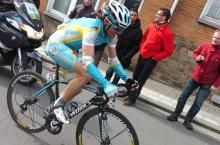
Liège-Bastogne-Liège ends the run of Northern Classics that started with the Tour of Flanders and settles the week-long Ardennes Classics supremacy battle. It packs numerous côtes on the out-and-back run from the suburb of Ans, just south of Liège.
On the return journey to Ans, the favourites will start to move forward in the pack. One of the toughest battles will be waged on the 2.1-kilometre La Redoute, coming at kilometre 226 and 35 kilometres from the finish. La Redoute will be an indicator of how the race will continue to unfold over the three following côtes of Sprimont (-29km), Roche aux Faucons (-19.5km) and Saint-Nicolas (-5.5km).
The finish to Ans is not considered one of the official climbs, but it rises steadily over the final two kilometres.
La Doyenne ('The Grand Old Lady') is the fourth of cycling's five Monuments. The fifth Monument, the Tour of Lombardy, comes almost six months later.
